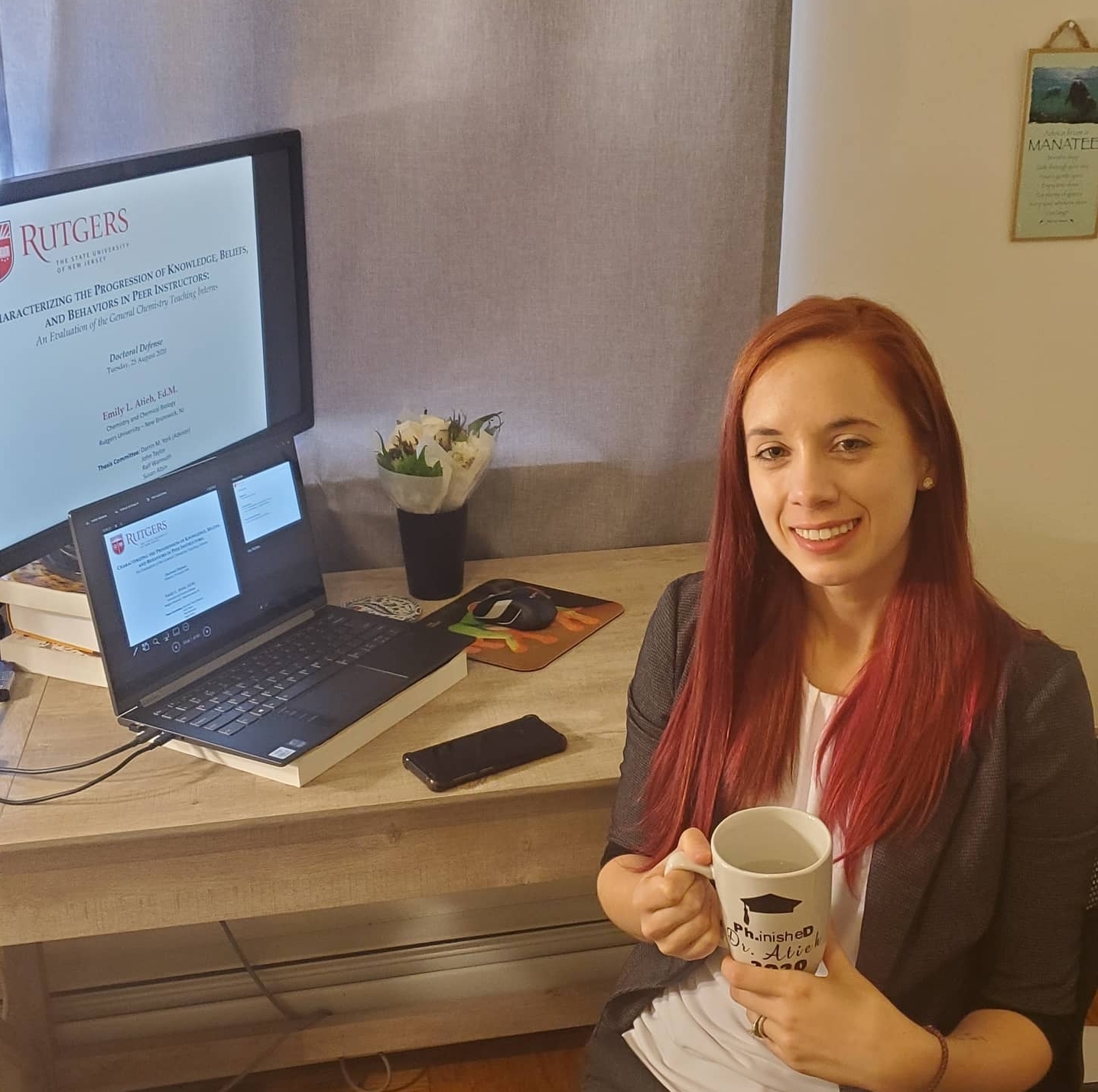| Emily L. Atieh |

Emily Atieh, PhD's latest paper "Beneath the Surface: An Investigation of General Chemistry Students’ Study Skills to Predict Course Outcomes" just came out as ASAP (as soon as publishable) in Journal of Chemical Education Research. Pandemic didn't stop Emily from graduating, moving to a new state and starting her postdoc all the while finishing up manuscripts and publishing papers!
We congratulate and miss Emily!
You can read her abstract below:
As the conversation in higher education shifts from diversity to inclusion, the attrition rates of students in the STEM fields continue to be a point of discussion. Combined with the demand for expansion in the STEM workforce, various retention reforms have been proposed, implemented, and in some cases integrated into policy following evidence of success. Still, new findings, technological advances, and socio-cultural shifts inevitably necessitate an ongoing investigation as to how students approach learning. Among other factors, students who enter college without effective study skills are at much greater risk of being unsuccessful in their coursework. In order to construct an equitable learning environment, a mechanism must be developed to provide underprepared students with access to resources or interventions designed to refine the skills they need to be successful in the course. Early, reliable assessments can provide predictions of individual student outcomes in order to guide the development and implementation of such targeted interventions. In the present study, a model is developed to predict students’ odds of success based on their study approaches, as measured by their responses to twelve survey items from an existing instrument used in the Chemistry Education Research literature designed to measure students’ deep and surface learning approaches. The model’s prediction specificity ranges from 66.5% to 86.9% by semester. Two distinct sets of lower-performing students are identified in the data: those who align predominantly with surface approaches to learning versus those who indicate using both deep and surface approaches to learning. This supports the idea of a tailored approach to interventions, rather than a one-size-fits-all solution. Results from this instrument were correlated to students’ reported study methods and beliefs.
